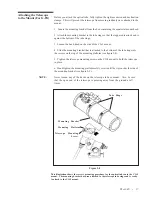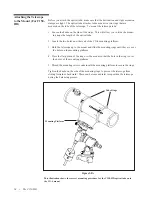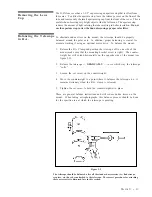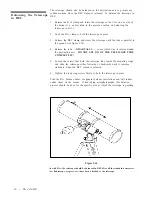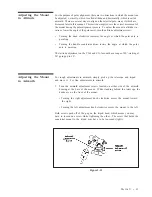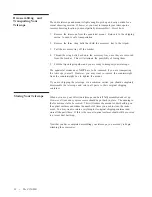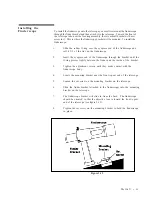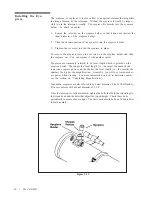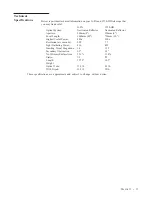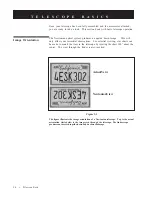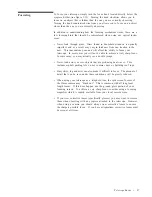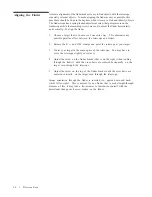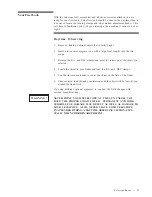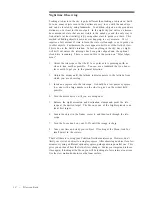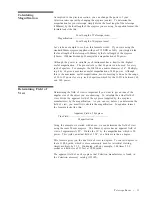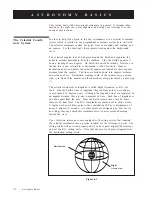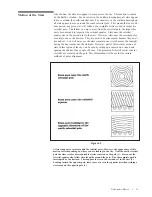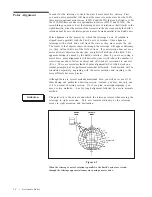
The G-8N • 19
The G-8N lens cover has a 1-1/2" cap covering an aperture stop that is offset from
the center. To utilize the aperture stop, leave the telescope cover on the front of the
tube and remove only the small aperture stop cap from the front of the cover. This is
useful when observing very bright objects, like the full moon. The aperture stop
reduces the amount of light entering the tube resulting in better resolution.
Do not
use the aperture stop to view the Sun unless using a proper solar filter.
To eliminate undue stress on the mount, the telescope should be properly
balanced around the polar axis. In addition, proper balancing is crucial for
accurate tracking if using an optional motor drive. To balance the mount:
1.
Release the R.A. Clamp and position the telescope off to one side of the
mount (make sure that the mounting bracket screw is tight). The counter-
weight bar will extend horizontally on the opposite side of the mount (see
figure 2-9).
2.
Release the telescope
—
GRADUALLY
—
to see which way the telescope
“
rolls.
”
3.
Loosen the set screw on the counterweight.
4.
Move the counterweight to a point where it balances the telescope (i.e., it
remains stationary when the R.A. clamp is released).
5.
Tighten the set screw to hold the counterweight(s) in place.
These are general balance instructions and will reduce undue stress on the
mount. When taking astrophotographs, this balance process should be done
for the specific area at which the telescope is pointing.
Removing the Lens
C a p
Figure 2-9
The telescope should be balanced after all the standard accessories (i.e., finderscope,
eyepiece, etc.) have been attached to the telescope. The correct procedure for attaching
these accessories is discussed latr in this section.
Balancing the Telescope
in R.A.













